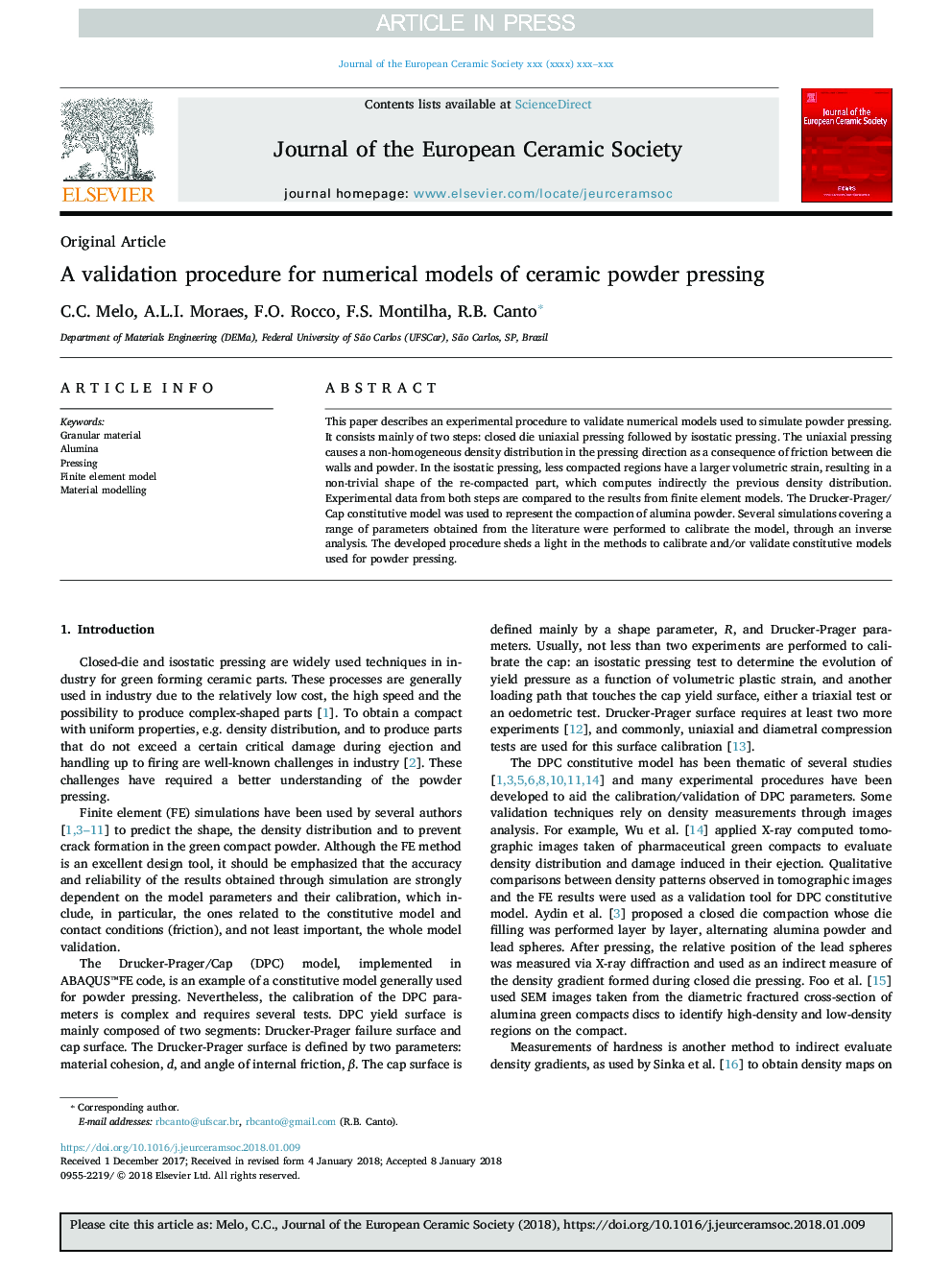| Article ID | Journal | Published Year | Pages | File Type |
|---|---|---|---|---|
| 7898197 | Journal of the European Ceramic Society | 2018 | 9 Pages |
Abstract
This paper describes an experimental procedure to validate numerical models used to simulate powder pressing. It consists mainly of two steps: closed die uniaxial pressing followed by isostatic pressing. The uniaxial pressing causes a non-homogeneous density distribution in the pressing direction as a consequence of friction between die walls and powder. In the isostatic pressing, less compacted regions have a larger volumetric strain, resulting in a non-trivial shape of the re-compacted part, which computes indirectly the previous density distribution. Experimental data from both steps are compared to the results from finite element models. The Drucker-Prager/Cap constitutive model was used to represent the compaction of alumina powder. Several simulations covering a range of parameters obtained from the literature were performed to calibrate the model, through an inverse analysis. The developed procedure sheds a light in the methods to calibrate and/or validate constitutive models used for powder pressing.
Related Topics
Physical Sciences and Engineering
Materials Science
Ceramics and Composites
Authors
C.C. Melo, A.L.I. Moraes, F.O. Rocco, F.S. Montilha, R.B. Canto,
